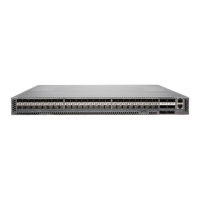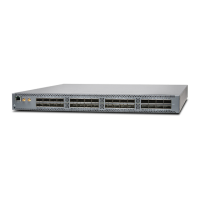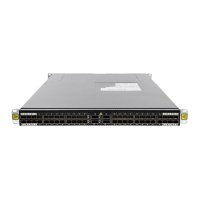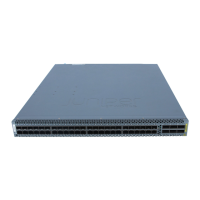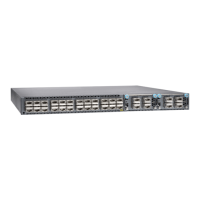To disconnect a fiber-optic cable from an optical transceiver installed in a QFX Series
device:
1. (Recommended) Disable the port in which the transceiver is installed by including
the disable statement at the [edit interfaces] hierarchy level for the specific interface.
WARNING: Do not look directly into a fiber-optic transceiver or into the
ends of fiber-optic cables. Fiber-optic transceivers and fiber-optic cables
connected to transceivers emit laser light that can damage your eyes.
WARNING: Do not stare into the laser beam or view it directly with optical
instruments even if the interface has been disabled.
2. Carefully unplug the fiber-optic cable connector from the transceiver.
3. Cover the transceiver with a rubber safety cap.
WARNING: Do not leave a fiber-optic transceiver uncovered except when
inserting or removing a cable. The rubber safety cap keeps the port clean
and prevents accidental exposure to laser light.
4. Cover the fiber-optic cable connector with the rubber safety cap.
Related
Documentation
Connecting a Fiber-Optic Cable to a QFX Series Device on page 377•
• Maintaining Fiber-Optic Cables in a QFX Series Device on page 379
Connecting a Fiber-Optic Cable to a QFX Series Device
QFX Series devices have field-replaceable unit (FRU) optical transceivers to which you
can connect fiber-optic cables.
Before you connect a fiber-optic cable to an optical transceiver installed in a QFX Series
device, ensure that you have taken the necessary precautions for safe handling of lasers
(see “Laser and LED Safety Guidelines and Warnings for the QFX Series” on page 168).
377Copyright © 2012, Juniper Networks, Inc.
Chapter 28: Replacing Transceivers and Fiber-Optic Cables
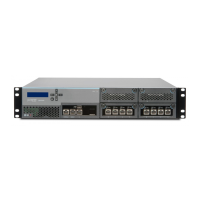
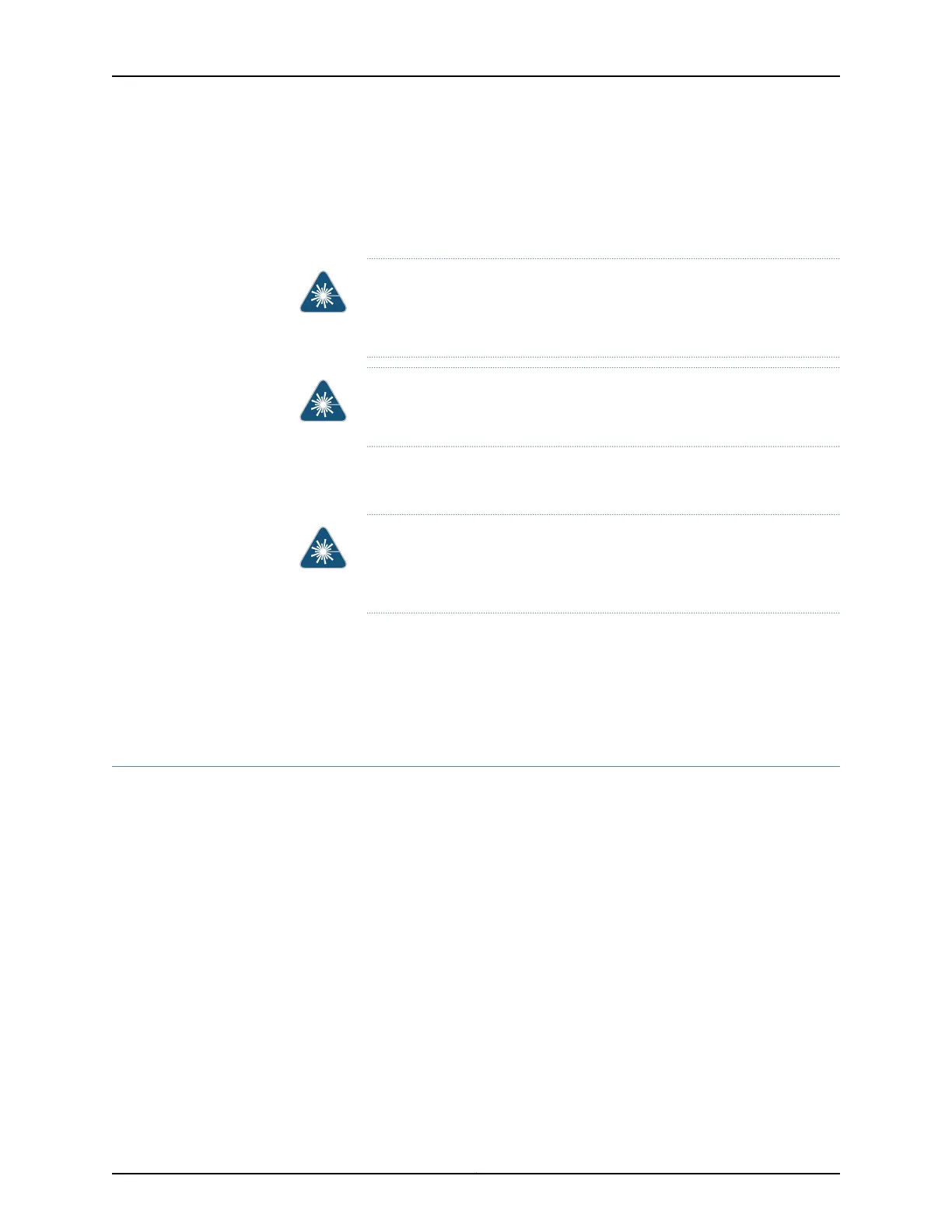